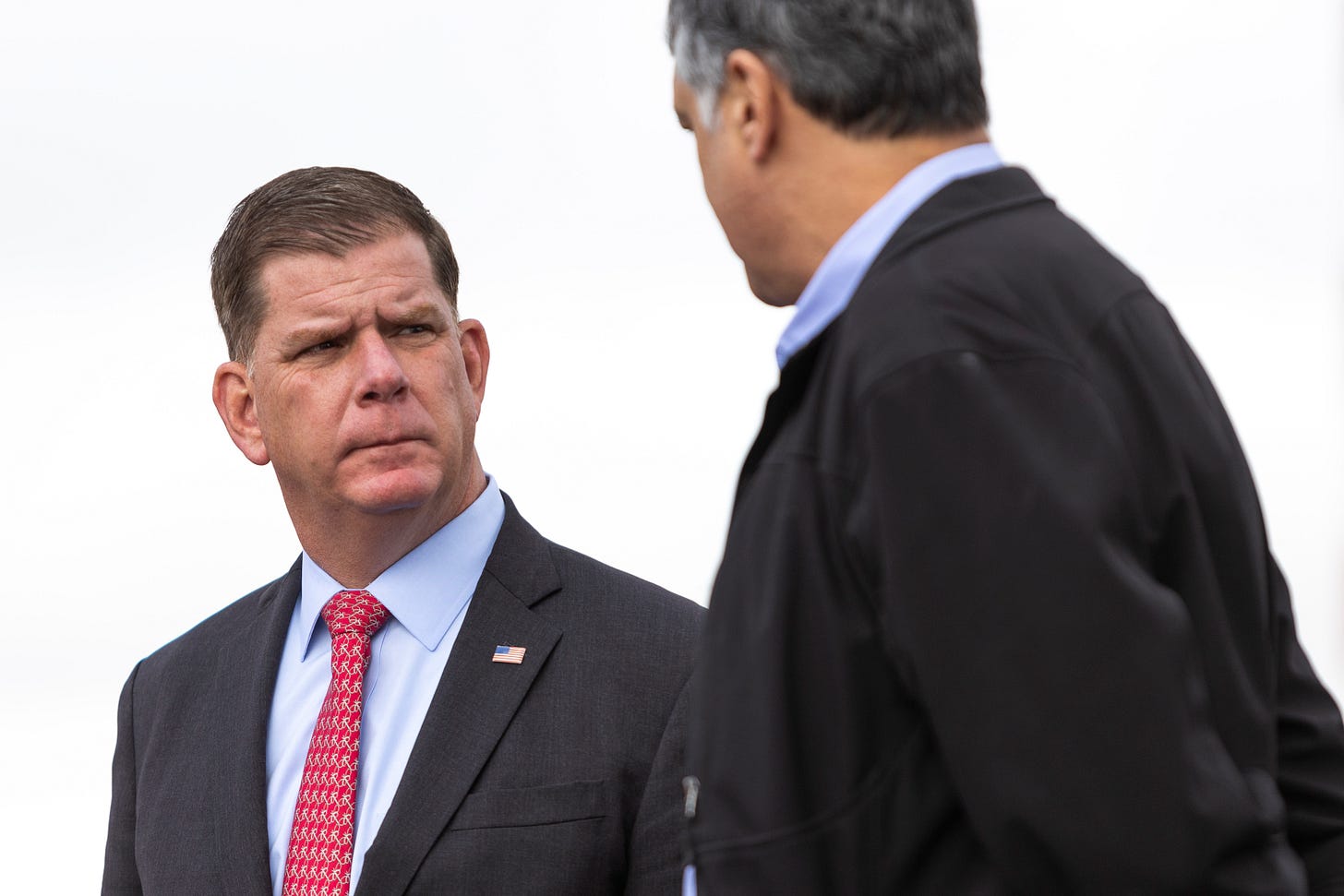US Labor Secretary Resigns & 4-Day Workweek Pilot Results | Roundup #16
Plus: Algorithmic Layoffs

Welcome to our new readers to the Workonomics Roundup! I post these Roundups every two weeks summarizing some of the latest labor, technology, and policy updates.
I’m poring through Twitter, economic research, policy updates, and employment data and summarizing it in a brief update you can read at work on your way to work.
As always, feel free to comment on this post or drop me a line on Twitter if you want to discuss or have any feedback.
Surveillance Tech in the Workplace
A worker surveillance software called TimeCamp was used for evidence in a Canadian civil tribunal, which ruled that an accountant over-billed her employer. The TimeCamp software estimated 50 of her billed hours were spent on “non-work tasks.” The accountant retorted that she was working on paper copies of client documents, which TimeCamp would have missed.
Workplace surveillance technologies are being introduced everywhere from Amazon fulfillment centers to freight trucks. However, these technologies risk alienating employees and potentially harming productivity.
What is the legal definition of “work time” for hourly and gig workers? It remains murky.
According to a Capterra survey of human resource leaders at US companies, 98% of them will use software and algorithms to at least partially inform layoff decisions. 35% said they would depend on tech over intuition for deciding who to lay off. Illinois and New York City are already regulating AI used in hiring due to the potential for discriminatory bias; firing tech could come next.
Labor Moves
30 Tesla workers were fired last week from the auto manufacturer’s Gigafactory 2 in Buffalo, NY, the day after an announcement of a union organizing drive. Organizing committee members of Tesla Workers United, the union that is seeking an election to represent workers at that facility, were among those fired. Workers United, which the Tesla union is affiliated with, is filing an injunction with the National Labor Relations Board to reverse the firings and potentially hit Tesla with financial penalties.
The National Labor Relations Board ruled earlier this week that it is illegal for companies to make employees sign severance agreements that include gag clauses (which prevent workers from making disparaging comments about their former employer). This has been a tough week for Elon Musk.
US Secretary of Labor Marty Walsh will leave federal office to become executive director of *checks notes* the NHL Players’ Association. There’s some mystery about why he is leaving now, but his salary will be $2.8 million higher as a union leader. Deputy Secretary Julie Su, who previously oversaw California’s labor department in the Newsom administration, will become Acting Secretary as the search for Walsh’s successor continues.
Looking Ahead for Workers
Results from the latest pilot of the four-day workweek are showing solid benefits for workers and companies. Several dozen UK firms that participated improved worker well-being by various measures (fewer sleep issues, less anxiety, improved work-life balance), with a small (probably not stat-sig) gain in revenue. Employee quit rates decreased by 65%. 96% of workers wanted to keep the four-day week after the pilot ended, and 92% of employers obliged.
The US faces a massive labor shortage of construction workers, despite federal investments in infrastructure, clean energy, and manufacturing. There will be an anticipated shortfall of over 500,000 workers in 2023. Government and corporations are rushing to scale up apprenticeship and training programs. As of 2021, there were only 200,000 registered construction apprentices.
Generative AI is poised to wipe out voice-acting jobs worldwide, with startups like Deepdub hiring voice actors to train AI “voice banks,” often for very little pay and no equity stake in the underlying technology. AI dubbing could be licensed to filmmakers and Youtube channels. Meanwhile, technologists like OpenAI’s Sam Altman have advocated for a public equity stake in AI companies to ensure the gains from AI are shared broadly. There’s a long road to get there.



